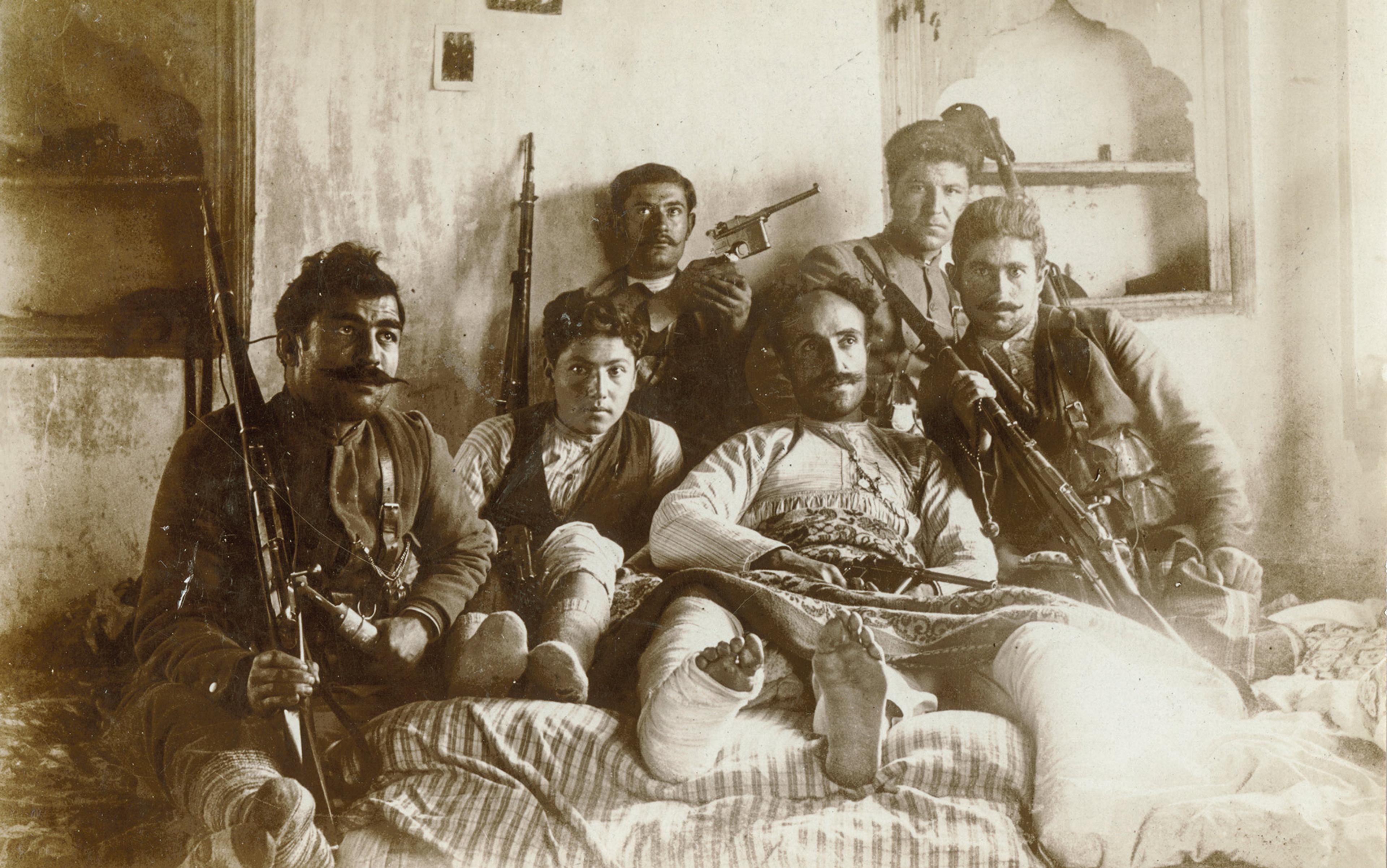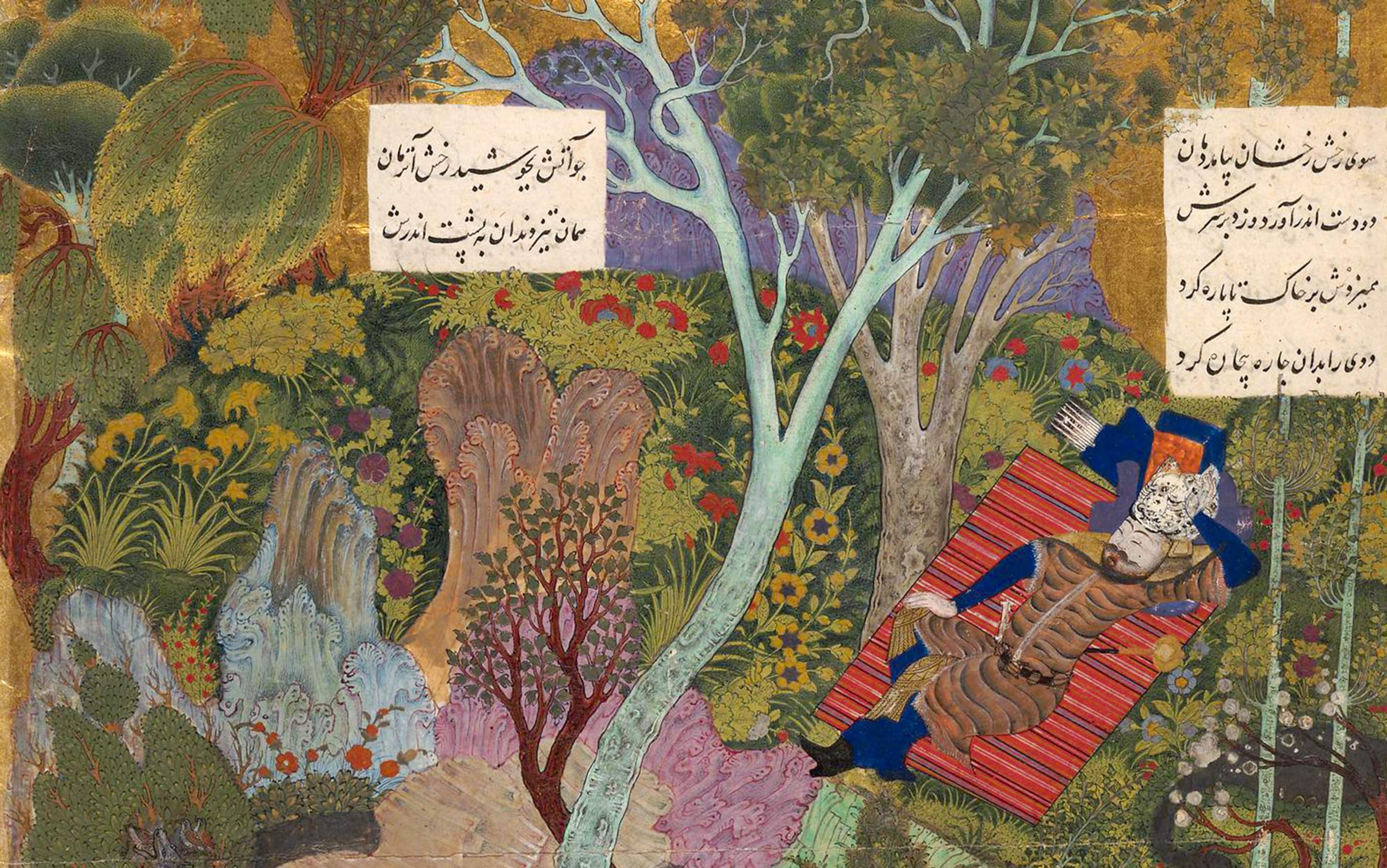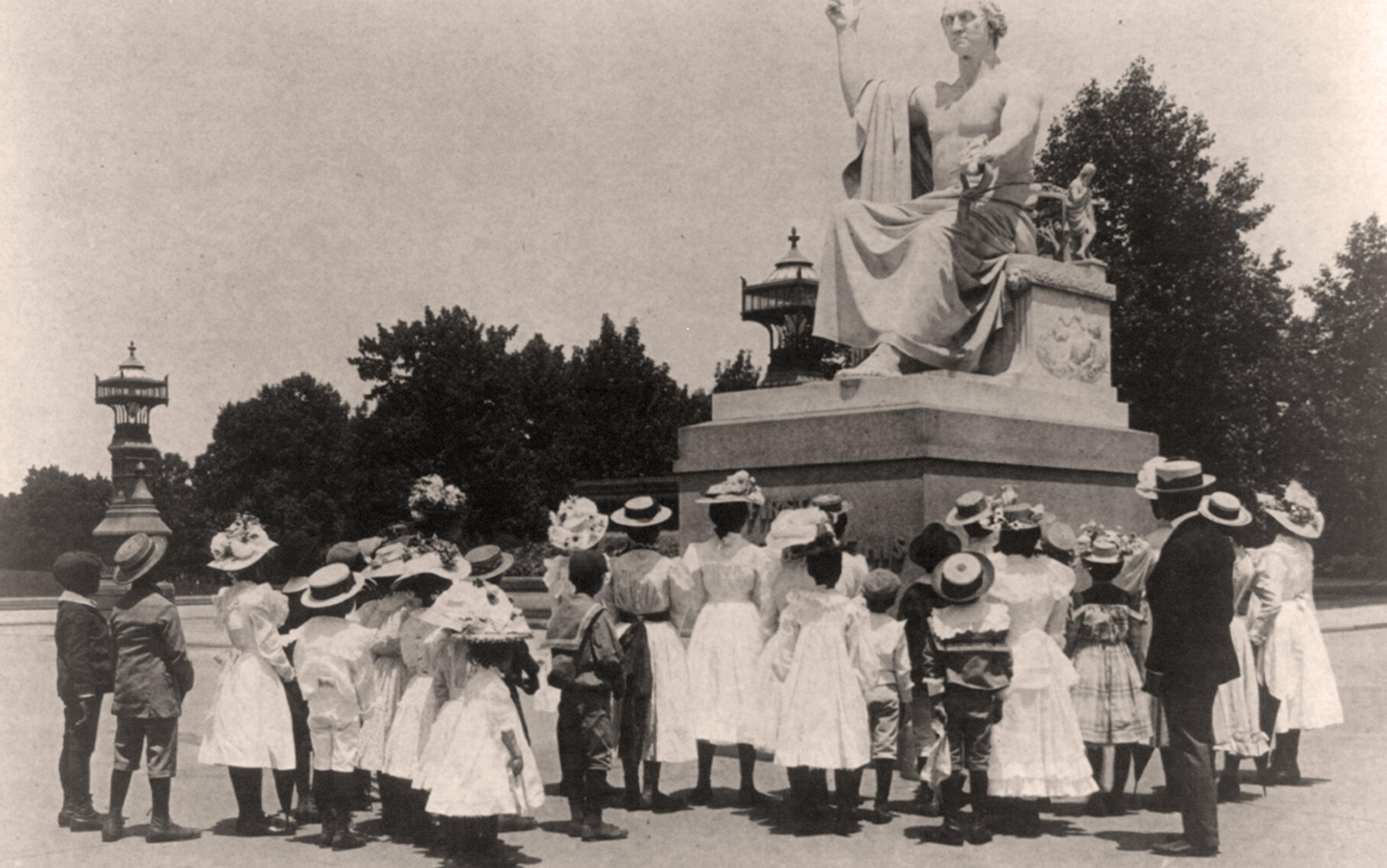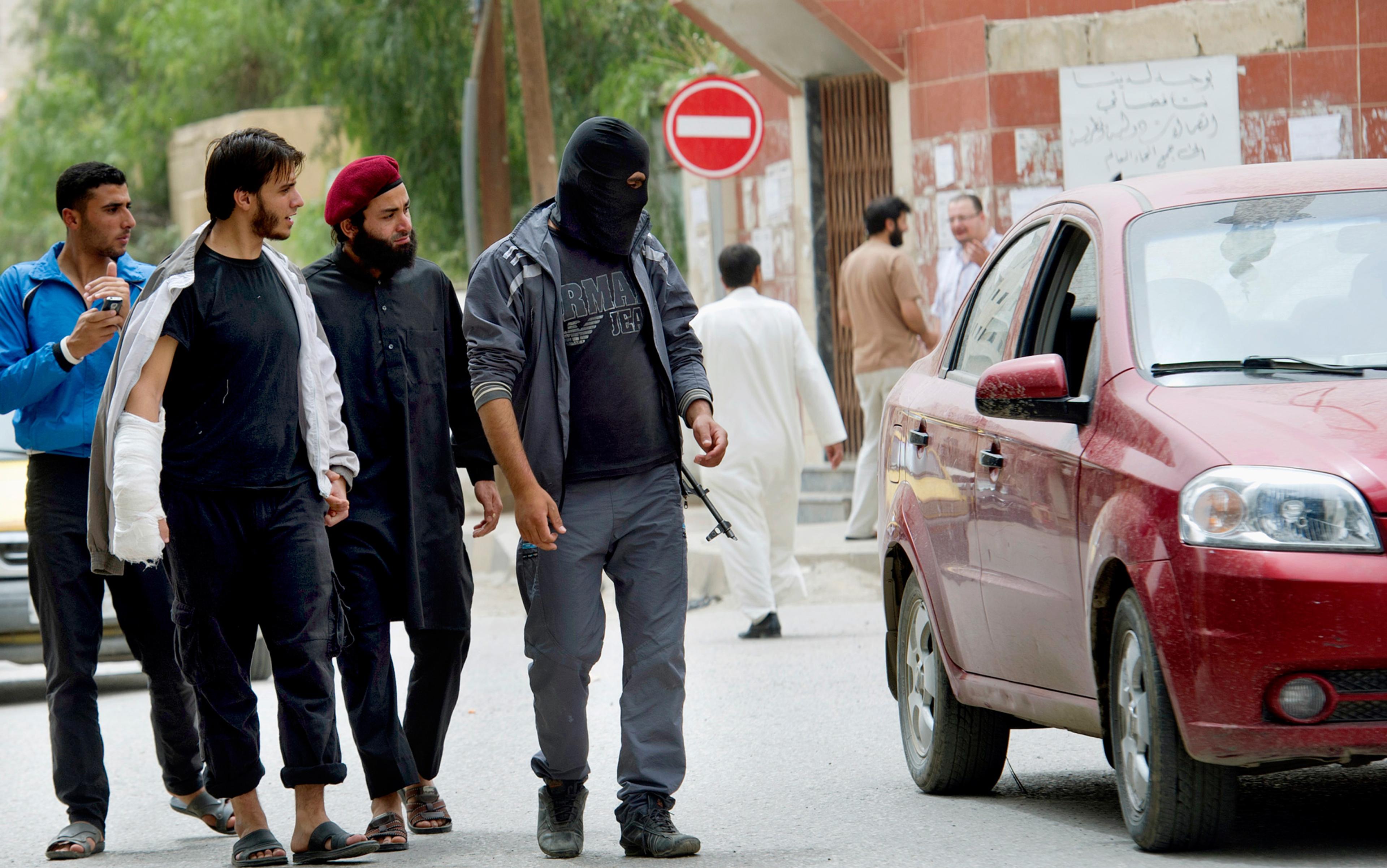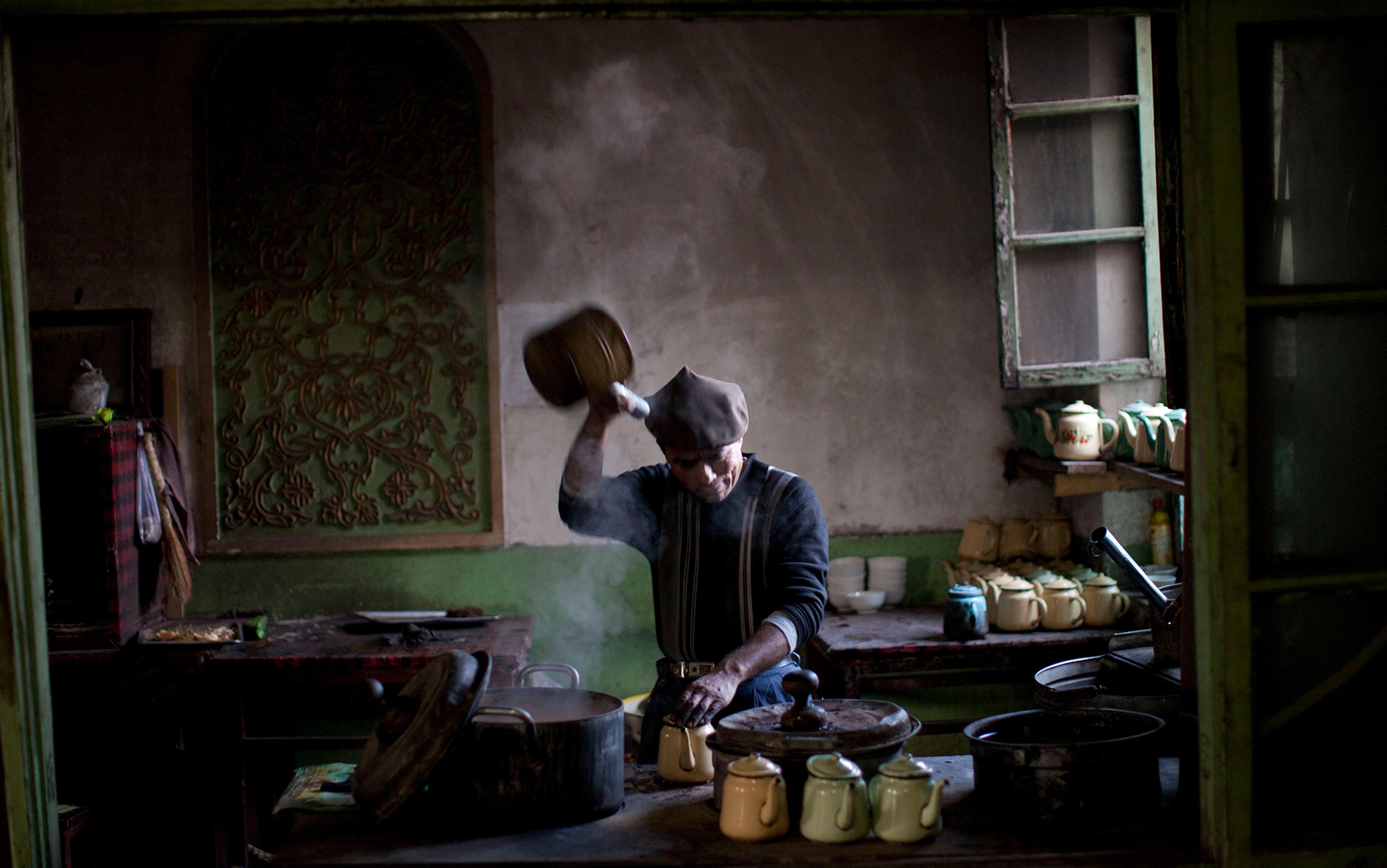On a day like any other, in early 20th-century Tbilisi, the skilled bomb-maker Rostom runs into his wife on the street. Eghsapet, surprised by the sight of her long-absent husband, asks: ‘When did you arrive?’ Most likely rushing to meet his comrades, Rostom stops and responds: ‘It’s been seven days … but I was very busy; I wasn’t able to pass by the house.’ Not much moved by this response, Eghsapet nonchalantly but generously replies: ‘Fine … when you have time, drop by the house, too.’
Rostom was the nom de guerre of Stepan Zorian (1867-1919) and, like many early 20th-century Armenian revolutionaries, he led a mobile life. Travelling frequently between the Russian, Ottoman and Qajar Iranian empires, he was one of a class of roving Armenian revolutionaries who collaborated in or took leading roles in the Russian, Iranian and Young Turk revolutions. Between 1905 and 1911, these upheavals shook the early 20th-century world and transformed the region through an experiment in constitutionalist ideas by attempting to limit the arbitrary rule of autocracies and introducing popular sovereignty.
In all three cases, these Armenian revolutionaries sought the cure to social and political iniquities in constitutionalism, in parliament, and in some degree of popular sovereignty. They were, in a word, democratisers who left an important legacy of bold opposition to autocracy and a firm commitment to social and economic justice and political freedoms. The Russian revolution of 1905 profoundly undermined the authority of the tsar and helped to generate greater class consciousness, which manifested in the 1917 Bolshevik revolution. The Iranian revolution embodied anti-autocratic and anti-imperialist politics – more so than anything else in the country’s past. It left an enduring legacy among Iranians, apparent in the most recent revolution of 1978-9, when Iranians took to the streets to protest against social and economic injustice, political repression and, this time, neo-imperialism. The Young Turk revolution ended the rule of Ottoman Sultan Abdülhamid II (1876-1909) and laid the foundation for the modern nation-state of Turkey by initiating the end of the centuries-old Ottoman empire. Each was a bloody revolution, either from the onset or in its aftermath, as in the case of the Young Turk rebellion, which was followed by the violent assimilationist policies, population transfers and genocide of Armenians.
The Russian, Iranian and Young Turk revolutions produced a whirlwind of ideas and activities, exhilaration and hope, as well as violence followed by anxiety, dejection and disillusion. These struggles for a reconfiguration of the relationship between state and subject, and freedoms of press, religion, assembly and so forth, captured the hearts and minds of participants – and onlookers – as they poured energy and resources into the revolutionary mêlée. In varying degrees, the movements all involved the collaboration of such linguistically and ethnically diverse imperial subjects as the Armenians, all bound together and inspired – despite their differences – by the promise of radical change and the adaptation of European Enlightenment ideas, as well as socialism in its many variants.
Born in Russia as a subject of the tsarist empire, Rostom came to risk his life in the service of three revolutions in neighbouring empires. During the Russian revolution, he convinced his party comrades of the importance of including the South Caucasus in the Armenian Revolutionary Federation’s (ARF) struggle for deliverance of the Armenian people from oppressive rule – both Ottoman and Russian. Two years later, in 1907, Rostom sat with Iranian constitutionalist leaders and consented to place the ARF, which by this point had become the leading Armenian party, at the service of the Iranian Constitutional Revolution (1905-11). Soon after the meeting, they took up arms together against Iranian royalists who were trying to crush their constitutionalist movement. In 1911, Rostom continued his political activism in the Ottoman empire after his party’s involvement in the reinstatement of constitution in the Young Turk revolution (1908).
This peripatetic life took Rostom to dozens of cities, from Qazvin in Iran to London. Like other Armenian revolutionaries, he moved from city to city within days, weeks or months of each other, and often travelled back and forth between multiple bustling urban hubs teeming not only with people – locals and migrants, skilled and semi-skilled or unskilled workers – but also with animals, vehicles and goods and, in the case of Baku in modern-day Azerbaijan, with local and foreign investors, oil refiners and revolutionaries. Rostom’s apparent ease in varied milieus was due to his local contacts and his polyglotism, and points to a central feature of these modern revolutions: the critical circulation of activists.
Rostom was one among dozens of revolutionaries who made their way through these early 20th-century revolutions, and whose ideas about constitutionalism, federalism and socialism travelled with them. The multiple sites these radical activists visited, and in which they lived and operated, reflect the extent of the network of party cells and members. They also reveal the significant shifts in technologies of global communication and transportation that began radically to transform people’s lives, and resulted in what the sociologist David Harvey in 1989 called ‘time-space compression’ or the accelerated ‘shrinking’ of the world. Technological advances led to faster and therefore more frequent travel, either by railway or steamship, and easier communication, primarily by telegraph, across wider distances, thus reducing the time it took to reach places near and far. It gave the impression that the world had become smaller because it had, in reality, become more easily accessible. At the same time, the world seemed to expand because these same technologies made available a range of ideas, encounters and exchanges, thus magnifying the available and reachable horizons. This experience of both contracting and expanding played an important role in connecting these revolutions and making possible the circulation of activists as well as their ideas.
The itinerant practices of these revolutionary cosmopolitans also reveal the broader reality of Armenian subjects of the period. At the turn of the 20th century, Armenians constituted a minority in the Ottoman, the Russian and the Iranian empires. The most significant number of Armenians lived in ancestral lands in Asia Minor, with a smaller, commercially and intellectually developed minority in the urban hubs of Istanbul/Constantinople and Izmir/Smyrna. It is an impossible task to establish the exact number of Ottoman Armenians for this period, but it appears to have been slightly under 2 million. A smaller Armenian community existed in the Araxes valley and Ararat plain, as well as in the South Caucasus – especially in Tbilisi and Batumi (Georgia), Yerevan (Armenia), Kars (Turkey) and Elisavetpol/Ganja (Azerbaijan) – and hovered above 1 million. Relative to the number of Ottoman and Russian Armenians, a small population of about 70,000 Armenians resided in the provinces of Azerbaijan and Isfahan in Iran.
With the failure of the reforms, Armenians no longer entrusted their future to Europe
The latter half of the 19th century saw great changes for the Ottoman and Russian empires, where most Armenians lived. Advances in and greater access to education and a journalistic and literary revival occurred in parallel to a changing political landscape at home and abroad, which simultaneously included reforms as well as persecution. Armenian women in both the Ottoman and Iranian empires were instrumental in the spread of education, primarily but not exclusively of girls, and in the establishment of charitable organisations. Education played a dominant role in fostering a sense of national identity and cultivating political awareness. Their schools educated thousands of Armenian girls and boys. In the early 20th century, and in particular during the period of upheaval in Iran and the Ottoman empire, Armenian women of the upper-middle and upper classes expanded their activism to the women’s movement in an attempt to bring women’s issues to the attention of women themselves, and to raise their consciousness.
The internal cultural and political awakening of the Armenian communities paralleled the Ottoman empire’s administrative, financial and military breakdown. The Ottoman state attempted to revitalise and preserve the empire through a number of reforms. The Tanzimât reforms were promulgated between 1839 and 1876 in an effort to safeguard the integrity of the empire and win over the loyalty of its subjects. It promised, among many other things, that subjects would have equal obligations and opportunities regardless of religion. The disparity between expectation and actual implementation, and even increasing mistreatment and violence against the empire’s Armenian population – most evident in the 1894-96 massacres of Armenians – compelled some Armenian leaders, similar to their Greek and Bulgarian counterparts, to seek assistance from western European powers as well as from Russia. With the failure of the implementation of reforms, starting in the 1880s, Armenians no longer entirely entrusted their future to Europe, although their hopes and efforts continued.
Developments in the Ottoman empire paralleled the enactment of Russification policies in the late-19th century Russian empire, which sought to put an end to the potential threat of minority nationalism by strengthening the Russian language, culture and national identity through their imposition on non-Russian subjects. In the case of Armenian subjects, these policies culminated in the confiscation of Armenian church properties in 1903. The Armenian revolutionary movement emerged from within Ottoman and Russian societies. In the 1870s, some Armenian youth, disillusioned with failed legal appeals and inspired by Bulgarian and Greek uprisings, began in the 1870s to form small and secret local groups in the eastern Ottoman provinces of Asia Minor to protect unarmed Armenians from acts of violence and extortion by Turks and Kurds. These organisations were soon followed by the Hunchakian Party, founded in Geneva in 1887, and ARF, established in Tbilisi in 1890, both much larger revolutionary parties. Both parties were founded outside Armenia but called for reforms and some form of self-rule for Armenians in the Ottoman empire.
Changes in the 19th and early 20th centuries shaped revolutions in Russia, in the Ottoman Empire and in Iran. They also contributed to creating the mindset and worldview of the activists who connected all three. Hence, by the time the revolts began as early as 1905, Armenian revolutionaries already had the experience and expertise necessary for revolutionary commitment. They produced their own munitions and explosives in more than a dozen workshops, which they operated throughout Asia Minor. They transported arms across imperial borders and even explosive material such as melanite and potassium chlorate purchased in Europe. Small groups of revolutionaries also led raids into Ottoman territory and even attempted the assassination of Sultan Abdülhamid in 1905. All of these, which were carried out as part of the national struggle, helped develop a culture of resistance and laid the foundation for circulation, connection and involvement in the three revolutions – all made feasible by the Armenians’ geographic presence in three empires and ease of transportation and communication.
Were the Armenian revolutionaries who traversed through empires across Europe and Asia Minor cosmopolitans? The adage of cosmopolitans being strangers nowhere and yet strangers everywhere aptly applies to these Armenian revolutionaries. Rostom was a guest in his own home in Tbilisi, just as he was at home in all the many communities through which he travelled. As a small segment of a nondominant group inhabiting three empires, for whom hierarchy, inequality and difference were an imperial hallmark, these circulating revolutionaries were both at home and on the margins. Crossing geographic and ideological boundaries, they sought to make their own host societies home, often referring to them as the ‘fatherland’ or ‘our country’. Through participation in radical movements, they fought for social and economic justice, equality of all citizens regardless of religious and ethnic differences, and autonomy. They were moved especially by the desire to rid the region of ethnic antagonism and generate harmonious co-existence. The Armenian revolutionaries believed that the ideal solution lay in ‘universal fraternity’ embodied in a constitutional and socialist federation of free, autonomous and equal nationalities.
Therefore, their message – expressed through their participation, and through their indigenisation of global ideologies such as constitutionalism and socialism – was a universal one, at the same time that it was part and parcel of the more limited Armenian effort in the Ottoman and Russian empires. After all, the campaigns and their participants were intertwined and informed by each other. Armenian revolutionaries could not imagine separating their cause from those of their neighbours within and outside Russian, Ottoman and Iranian frontiers. Nor could they limit themselves to the confines of those empires. In private meetings, at congresses such as the Socialist International and in cafés or private residences, they interacted and collaborated with revolutionary and intellectual counterparts in western Europe. Some, such as the Austrian Social Democrat Victor Adler, even helped them acquire a meeting space for a congress in Vienna in 1907, while French socialists, including Jean Jaurès and Francis de Pressensé, attempted to garner European support for Armenians in the Ottoman empire.
Armenians sought ‘to be not the illegitimate but the real child of a free fatherland’
Time and time again, during the rebellious years of 1904 to 1912 that rocked the South Caucasus, the Ottoman empire and Iran, they appealed for inclusion – whether in the form of being part of a Caucasian whole, or Ottomanism, or inclusive Iranian nationalism. The frequent application of the words ‘our country’ to all three states by their respective Armenian populations, as well as their emphasis on encompassing part of a broader society and identity, signified an acute consciousness of their realities and a path that promised their own welfare and progress unambiguously in line with the wellbeing and development of their host/home societies and states. Solidarity, in particular – whether between Armenians and Iranians or Armenians and Turks – recurred as a common refrain in print, and was very similar to that of other Ottoman Muslim and non-Muslim subjects, such as Bulgarians, Macedonians and Albanians, as they all engaged with the same ideas and vocabulary as ‘the children of the same father’ and of ‘the same fatherland’.
Whenever Armenian radicals explained their participation in the three revolutions, they positioned themselves not apart from but as part of an inclusive society to be transformed by connected revolutionary struggles. Thus, their adoption and adaptation of ideas and, by extension, identities strongly linked their present and their future with those of their fellow-subjects. Their campaign to join the Iranian and Ottoman military is an excellent example of the application of an inclusive identity: they pushed for military service and government positions, seeking ‘to be not the illegitimate but the real child of a free fatherland and to enjoy the fatherland’s beneficence and bitterness’. Even as an ethnically and religiously distinct minority, they sought incorporation into the nation in place of ‘otherness’. They, like other imperial subjects such as Greeks, Arabs and others, adopted more than one loyalty – an all-encompassing imperial one, and a more local or ethnoreligious one. As such, they lived ‘betwixt and between’, a state that made them particularly proficient revolutionary cosmopolitans.
I am struck by the similarities between the rapidly changing world of these roving revolutionaries and that of today’s revolutionaries. Both groups have experienced figurative and literal ground-shaking changes in transportation and communication technologies; we might think of the telegraph at the turn of the 20th century as the internet of today, not only in its heightened pace of transmitting information but also for its transformational impact on society. Their world, much like ours, probably seemed to be on speed, with all the implied effects associated with the highs and the risks, including the ‘comedown’. An additional parallel to this world, accentuated by an absence – or at least challenge – is our revolutionary cosmopolitans’ efforts to obviate ethnic antagonism, their calls for inclusive identity, and their aspirations to belong to a larger whole, thus sharing both ‘beneficence and bitterness’.
